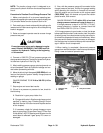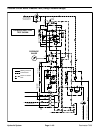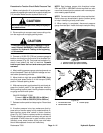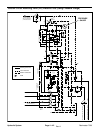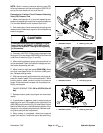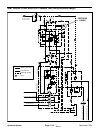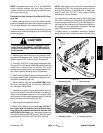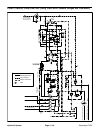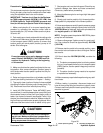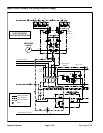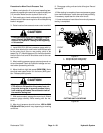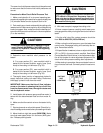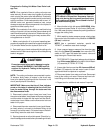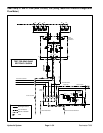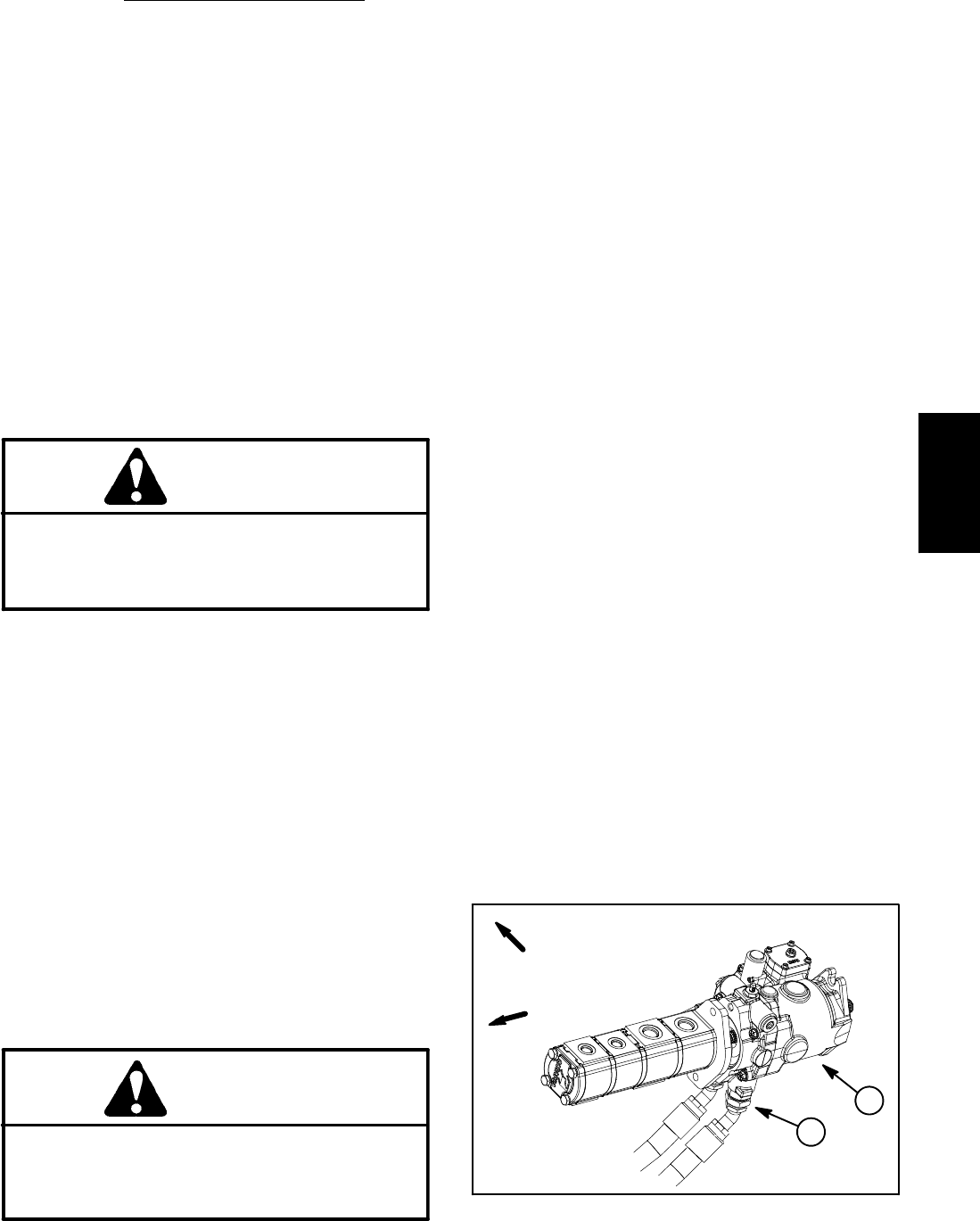
Reelmaster 7000 Hydraulic SystemPage 4 -- 47
Procedure for Piston (Traction) Pump Flow
Test
This test measurespiston (traction) pump output (flow).
During this test, pump load is created at the flow meter
using the adjustable load valve on the tester.
IMPORTANT: Traction circuit flow for the Reelmas-
ter 7000 is approximately 30 GPM (113.5 LPM). Use
40 GPM Hydraulic Tester #AT40002 (pressure and
flow) for this test (see Special Tools in this chapter).
1. Make sure hydraulic oil is at normal operating tem-
perature by operating the machine under load for
approximately ten (10) minutes. Make sure the hydrau-
lic tank is full.
2. Parkmachine onalevel surfacewith thecuttingunits
raised and off. Make sure that the mow speed limiter is
in the transport speed (2WD) position to ensure that
traction pedal can move piston (traction) pump to full
stroke. Shut off engine.
CAUTION
Prevent personal injury and/or damage to equip-
ment. Read all WARNINGS, CAUTIONS and Pre-
cautions for Hydraulic Testing at the beginning
of this section.
3. Make sure that traction pedal is adjusted to the neu-
tral position. Also, ensure that piston (traction) pump is
at full stroke when traction pedal is pushed into fully for-
ward position.
4. Raise and support machine so all wheels are off the
ground (see Jacking Instructions inChapter 1 -- Safety).
5. Thoroughly clean junction of hydraulic hose and left
side fitting onbottom of piston pump(forward port)(Fig.
36). Disconnect hose from left side pump fitting.
6. Install 40 GPM Hydraulic Tester #AT40002 (pres-
sure and flow) in series between piston pump fitting and
disconnected hose to allow flow from piston pump to
tester. Use hydraulic hose kit (see Special Tools in this
chapter)toconnecttester tomachine.Makesurethatfit-
ting and hose connections are properly tightened. Also,
make sure the flow control valve on tester is fully open.
CAUTION
Allwheels willbe off theground androtating dur-
ing this test. Make sure machine is supported so
itwill notmove andaccidentallyfall topreventin-
juring anyone near the machine.
7. Startengine and runat low idle speed.Check for any
hydraulic leakage from tester and hose connections.
Correct any leaks before proceeding.
8. Move throttle so engine is running at high idle speed
(2850 RPM).
9. Slowly push traction pedal to fully forward position.
Keep pedal fully depressed in the forward position.
10.Havesecondpersoncarefullywatchpressuregauge
on tester while slowly closing the flow control valve until
1000PSI (69bar) isobtained.Verifywith aphototacthat
the engine speed is still 2850 RPM.
NOTE: If engine speed drops below 2850 RPM, piston
pump flow will decrease.
11.Observe flow gauge. If piston pump is in good condi-
tion, flow indication should be approximately 29 GPM
(110 LPM).
12.Release traction pedal to the neutral position, open
flow control valve on tester and shut off engine. Record
test results.
13.If flow is less than 26 GPM (98 LPM), consider the
following:
A. The piston pumpswash plate is not being rotated
fully (e.g. mow speed limiter is notin transport speed
(2WD) position, tractionpedal linkage may need ad-
justment).
B. The piston (traction) pump needs to be repaired
or replaced as necessary.
14.Make necessaryrepairs beforeperformingany addi-
tional tests.
15.When testing is complete, disconnect tester and
hose kit from pump fitting and machine hydraulic hose.
Connect machine hydraulic hose to pump fitting. Lower
machine to ground.
Figure 36
1. Piston (traction) pump 2. LH fitting (forward port)
FRONT
RIGHT
1
2
Hydraulic
System



